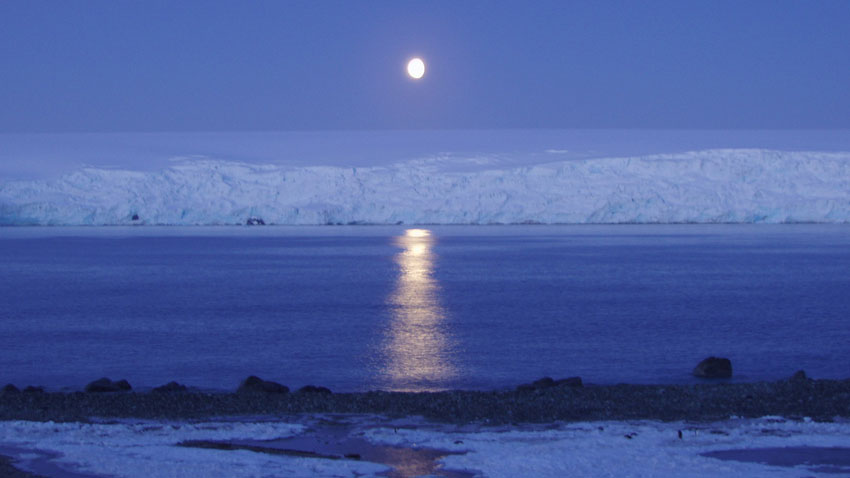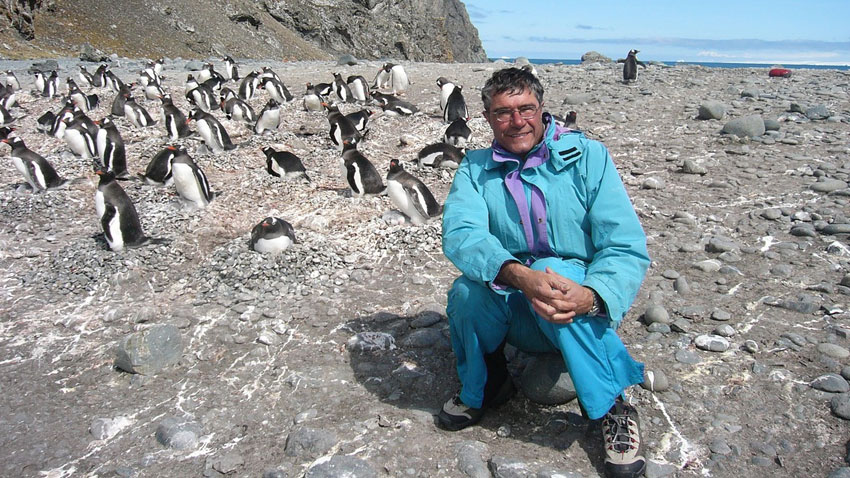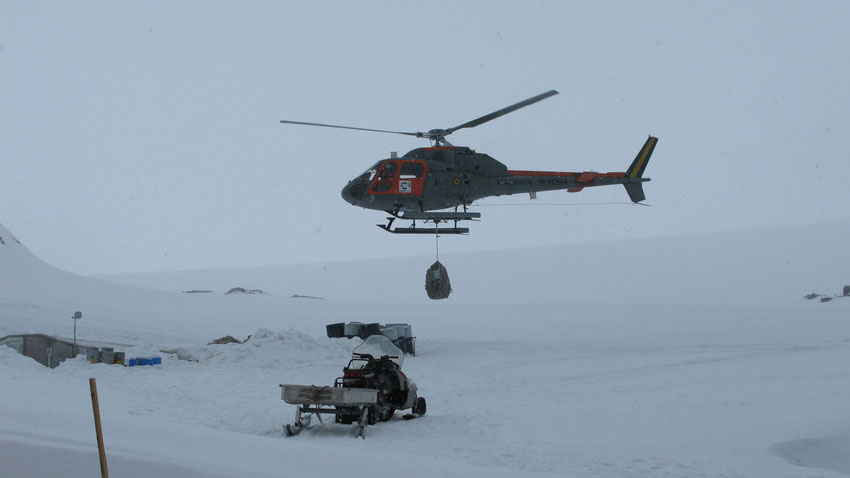Livingston Island, in the South Bay of Antarctica, is where the Bulgarian Antarctic base, St. Kliment Ohridski, is located. The first Bulgarian research expedition arrived in Antarctica in the spring of 1988, laying the beginning of Bulgarian scientific research on the ice continent.
“These are the most extreme conditions on the planet humans can find themselves in,” says Prof. Hristo Pimpirev, geologist and leader of Bulgaria’s polar expeditions. “Temperatures on the South Pole are like on another planet.”

The lowest temperature registered is 89 degrees C. below zero, but during polar summer temperatures range from 15 to 38 degrees below zero. As technology advances, Livingstone Island is getting to be more and more populated. Close to the Bulgarian research base are the bases of another 7-8 countries – Spain, Russia, Uruguay, Argentina, China etc. As Prof. Pimpirev says, together with them, Bulgaria governs the continent.
“Bulgaria is the only country on the Balkan peninsula that has had a base there for 30 years, where people go to work every year,” he says. “There the country has stepped out of its Balkan neighbourhood. Together we are writing history and it came as a big surprise when I was given back the first Bulgarian flag erected on the island, which we had thought lost 30 years ago. Back then, together with Borislav Kamenov, we were working with British geologists, and we left the flag on the spot where the base was to be put up. Our other colleagues were on board a Russian icebreaker, transporting the two houses that were to become the Bulgarian base in 1988. We hoisted the flag on top of the first Bulgarian house that we later came to call the Lame Dog, one month after the Spanish set up base close by.”

In 1990, when the Bulgarian polar expedition temporarily suspended its work due to the political changes taking place in Bulgaria, the Spanish decided to go and visit buildings close by. They found the two houses empty and while they were wondering whose they were, they found the Bulgarian flag inside a crack in the ice, and took it as a keepsake. Not long ago, as the anniversary was being celebrated of the first Bulgarian expedition, the flag was sent as a gift.
“That was a unique gesture, it brought tears to my eyes,” Prof. Pimpirev says. “Of course, its place is with the museum collection we put together 5 years ago at the National Museum of History in Boyana, as Bulgarian Antarctic research is part of the country’s most modern history. It turns out that we Bulgarians really and truly have not lost a single flag in battle, and now we have been given back the first flag flown over our first structure in Antarctica.”
The Bulgarian researchers on Livingstone Island carry out research that is crucial to the entire scientific world – in geology, climate change, the rise in sea levels, seismic activity, invertebrates, the effect of exposure to UV rays on human skin etc. Besides the valuable scientific discoveries, the Bulgarian base has actually become one of the island’s landmarks, as the first hut that was home to the expedition 30 years ago has been preserved. The Lame Dog, as the expedition’s members came to call it, was given the status of a Livingstone Island cultural and historical heritage site in 2015. And that means it has to be preserved as it originally stood.

“The Lame Dog is one of the oldest structures on the whole of Livingstone Island. It is just 18 sq. meters, but it served as dormitory, kitchen, a place to do our scientific research, a place to take a rest. There were 8 of us living there, at times reaching 12-13. Polar expeditions are new to Bulgaria’s history, and everything that has been done there, was done with our own hands. For example, we had a table from the Mikhail Somov ship, and it served as a bed and hung from the ceiling. To be able to lie down in it, we had to squeeze through the space between the bed and the ceiling, and that was only 90 cms. We have made benches, beds out of planks, we have drawn maps and made paintings on the walls just to make the place feel more like home. The first ham radios we used to contact friends and family in Bulgaria are still there. So, it is a building that has preserved the spirit of the Bulgarians who have worked on that continents since the end of last century.”
A small-scale model of the Lame Dog - an exact replica of the first Bulgarian structure in Antarctica - will be put on display in the yard of the National Museum of History in September.
English version: Milena Daynova
Exactly 3 years ago, on February 24, Russia’s invasion of Ukraine began – an event that woke up Europe 77 years after the end of World War II and called into question one of the main goals of the EU – preventing a new armed conflict on the continent...
The festive service for the consecration of the new Bulgarian Orthodox church in London is led by His Holiness Daniil , Patriarch of Bulgaria, who also officiated at the Ressurection Vespers on Saturday. Hundreds of lay people-official guests and..
The Martenitsa Festival was held in Brussels f or the third consecutive year . Cultural organizations from Bulgaria, Romania and Moldova presented their country's traditions related to the "Baba Marta" holiday, which heralds spring. The initiative..
The festive service for the consecration of the new Bulgarian Orthodox church in London is led by His Holiness Daniil , Patriarch of Bulgaria, who also..
The Martenitsa Festival was held in Brussels f or the third consecutive year . Cultural organizations from Bulgaria, Romania and Moldova presented their..
Exactly 3 years ago, on February 24, Russia’s invasion of Ukraine began – an event that woke up Europe 77 years after the end of World War II and called..

+359 2 9336 661
